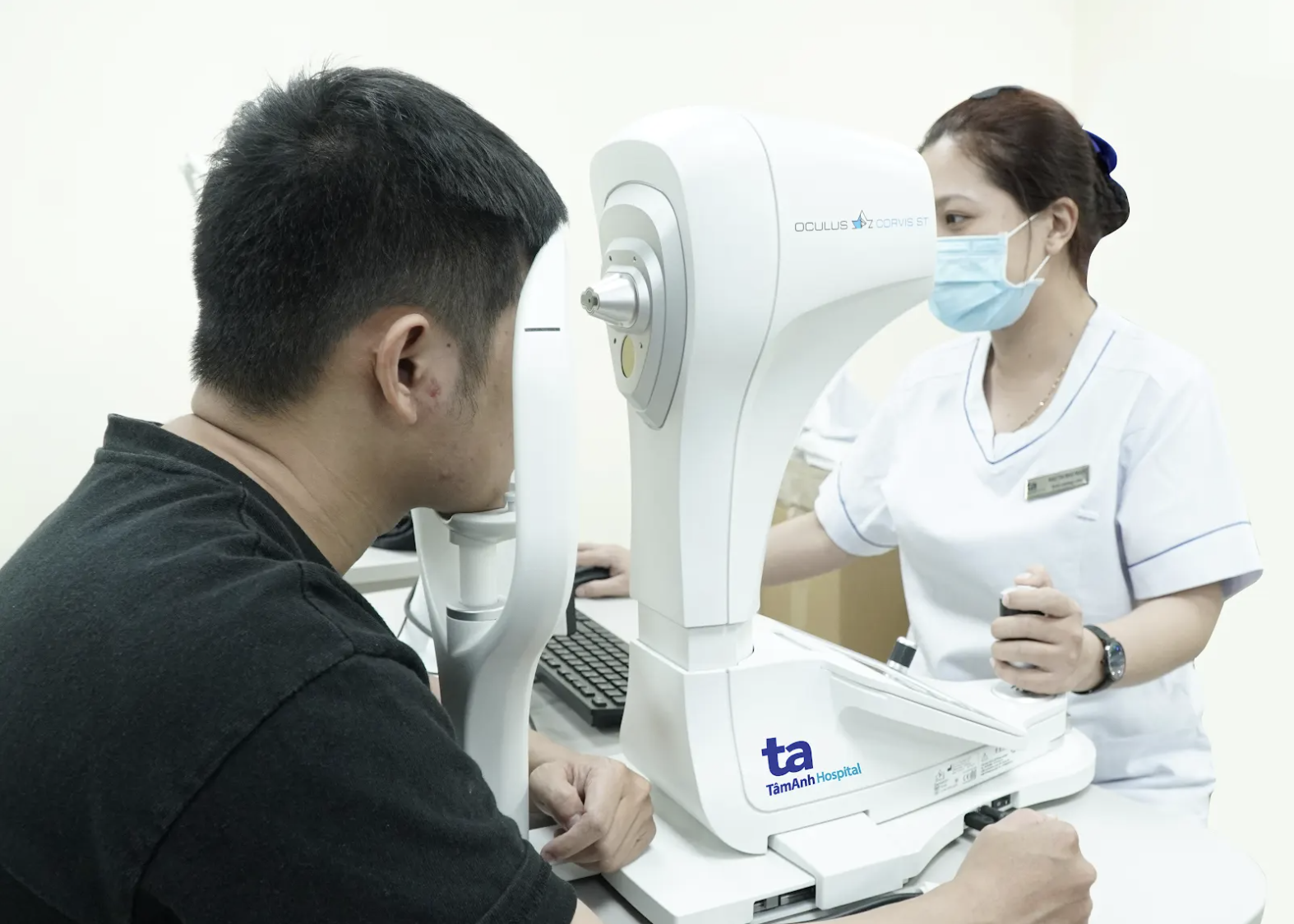Answer:
LASIK surgery corrects myopia by reshaping the cornea, allowing individuals to see clearly without glasses.
LASIK is suitable for people 18 and older. Before surgery, your prescription should be stable, with no more than 0.5 diopter change over a year. Higher levels of myopia require removing more corneal tissue, so the cornea must be sufficiently thick, at least 450 micrometers, to ensure safety during and after the procedure.
To qualify for LASIK, you should be free of acute and chronic eye conditions such as keratitis, corneal dystrophy, keratoconus, and retinal hemorrhage. Pregnant or breastfeeding women should wait at least 6 months after giving birth for hormone levels and refractive errors to stabilize.
 |
A man undergoes corneal assessment for strength, firmness, and elasticity. Illustration: Tam Anh General Hospital |
Depending on your eye condition, the surgeon might recommend either corneal refractive surgery or an intraocular procedure. SMILE Pro is a modern LASIK technique that doesn't require creating a corneal flap, thus avoiding associated complications like flap tears, dislocations, or wrinkles. SMILE Pro uses a short laser pulse (10 seconds), a small incision, leaves no scar, significantly reduces dry eye, and offers greater comfort post-operation.
Given your current myopia and astigmatism, you should visit a hospital with a specialized LASIK department for a thorough refractive examination. Corneal topography helps examine the fundus, determine corneal thickness, and assess its strength and biological structure. Based on these results, the doctor will determine your eligibility for LASIK and recommend the most suitable method based on your needs, eye condition, and budget.
Dr. Dinh Trung Nghia
Deputy Director, High-Tech Eye Center
Tam Anh General Hospital, TP HCM
| Readers can submit questions about ophthalmology here for doctor's answers. |












